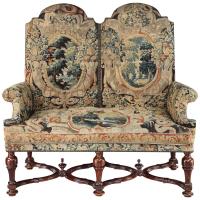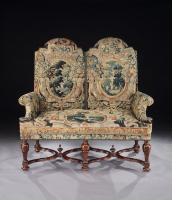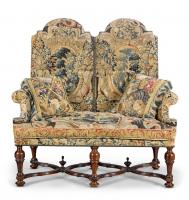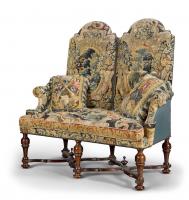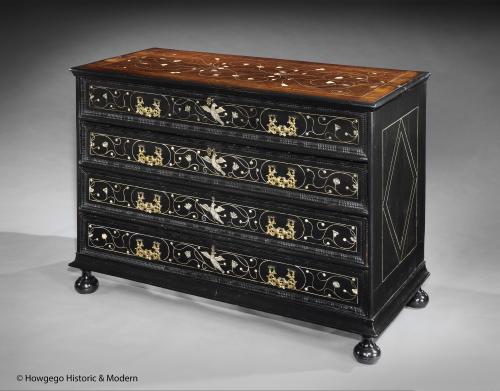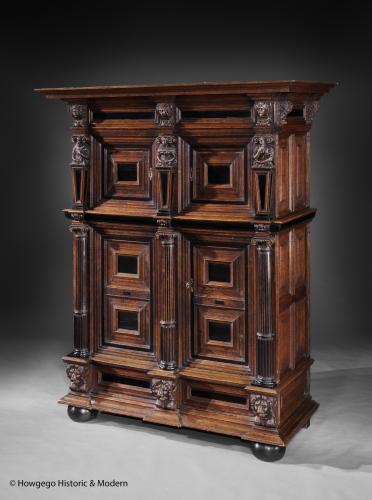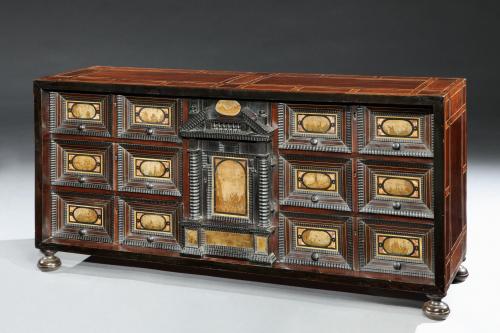
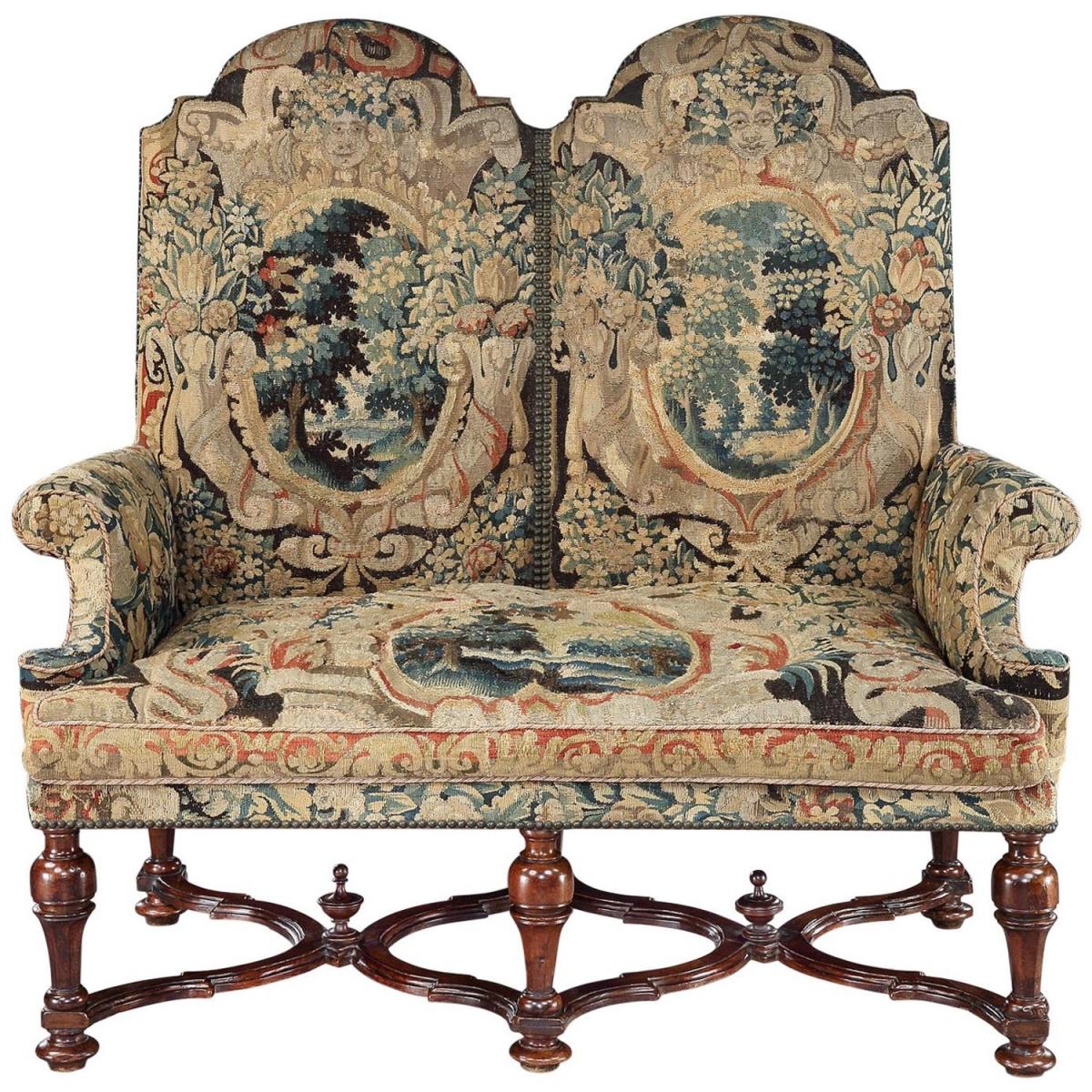
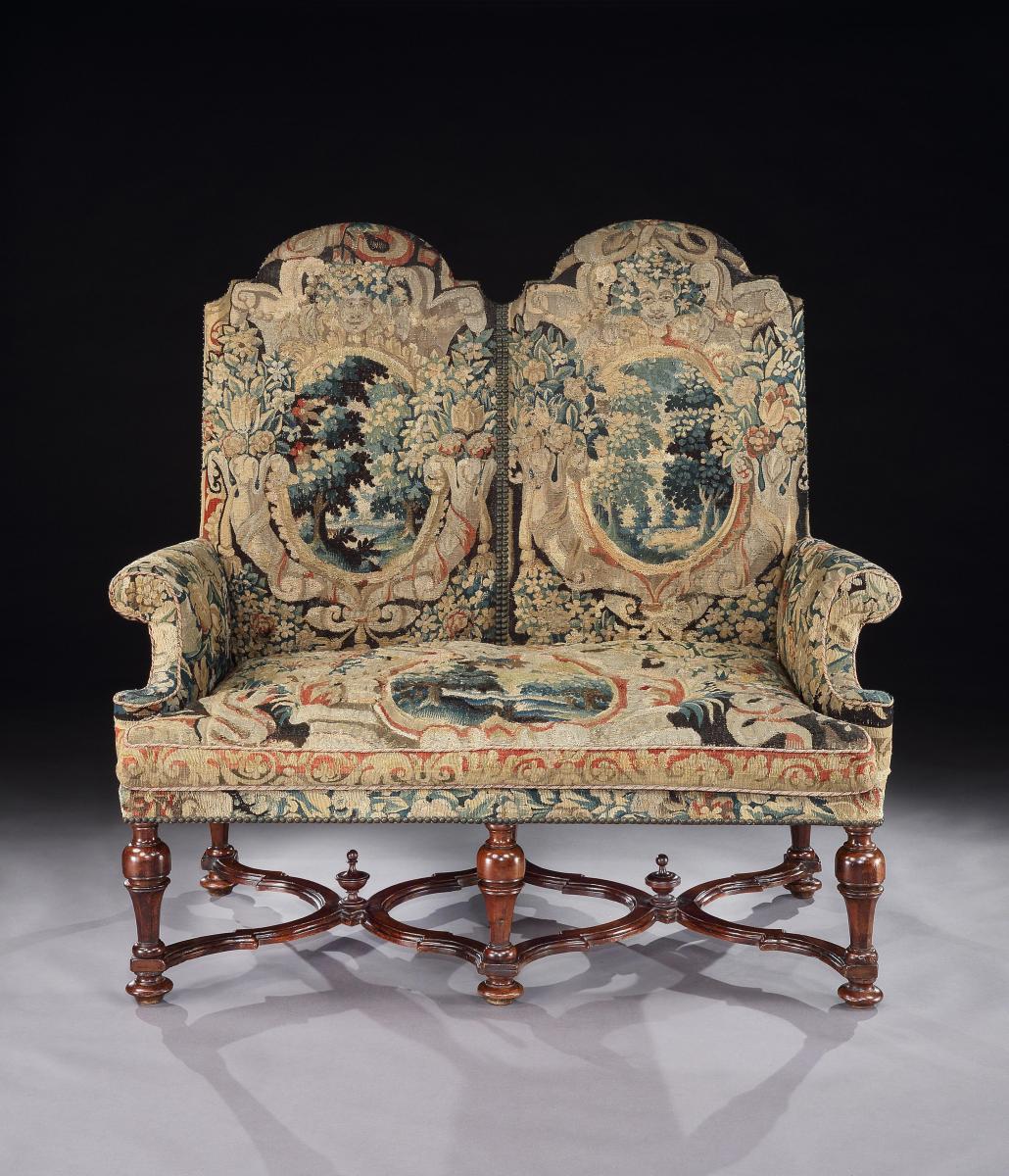
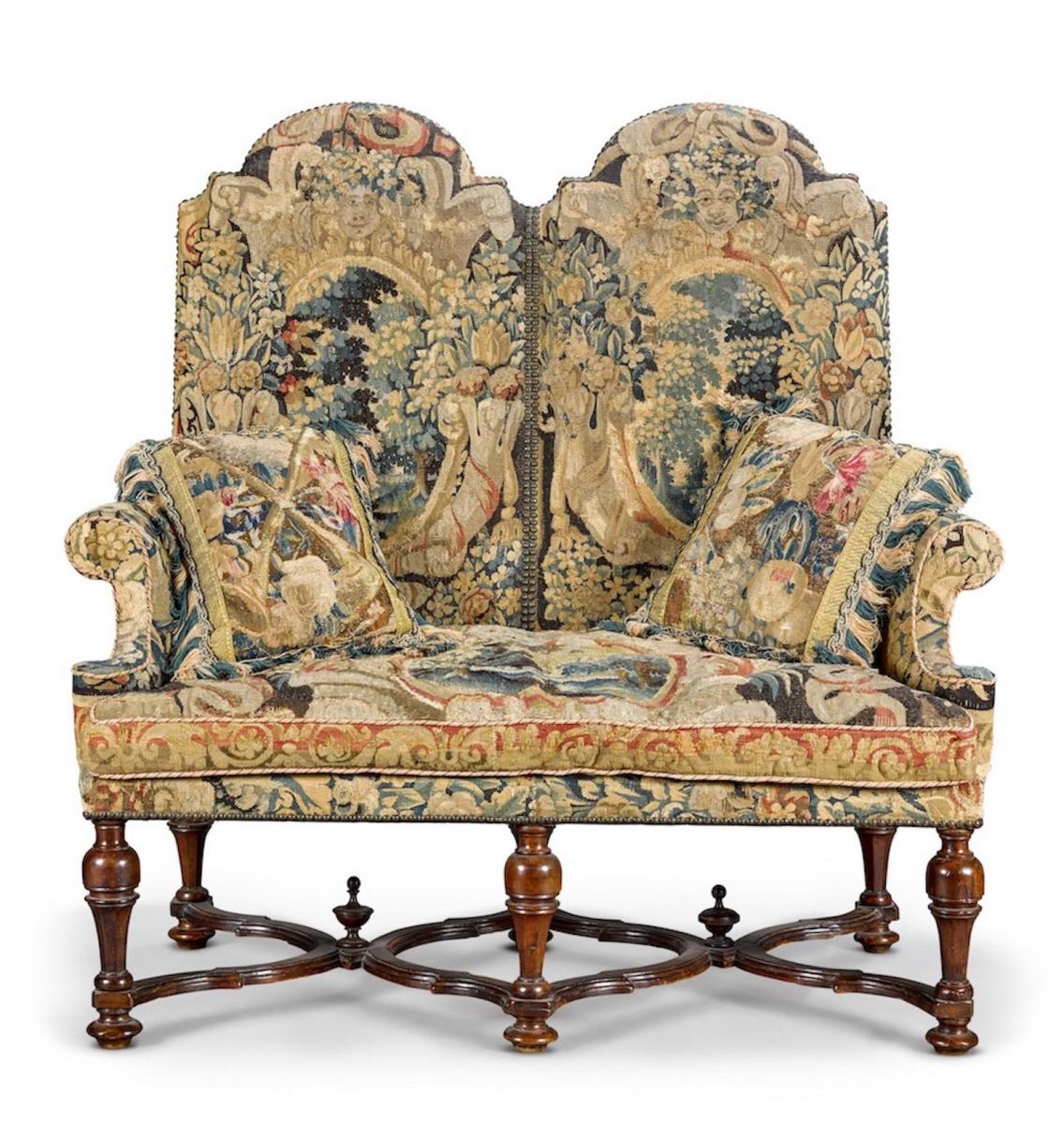
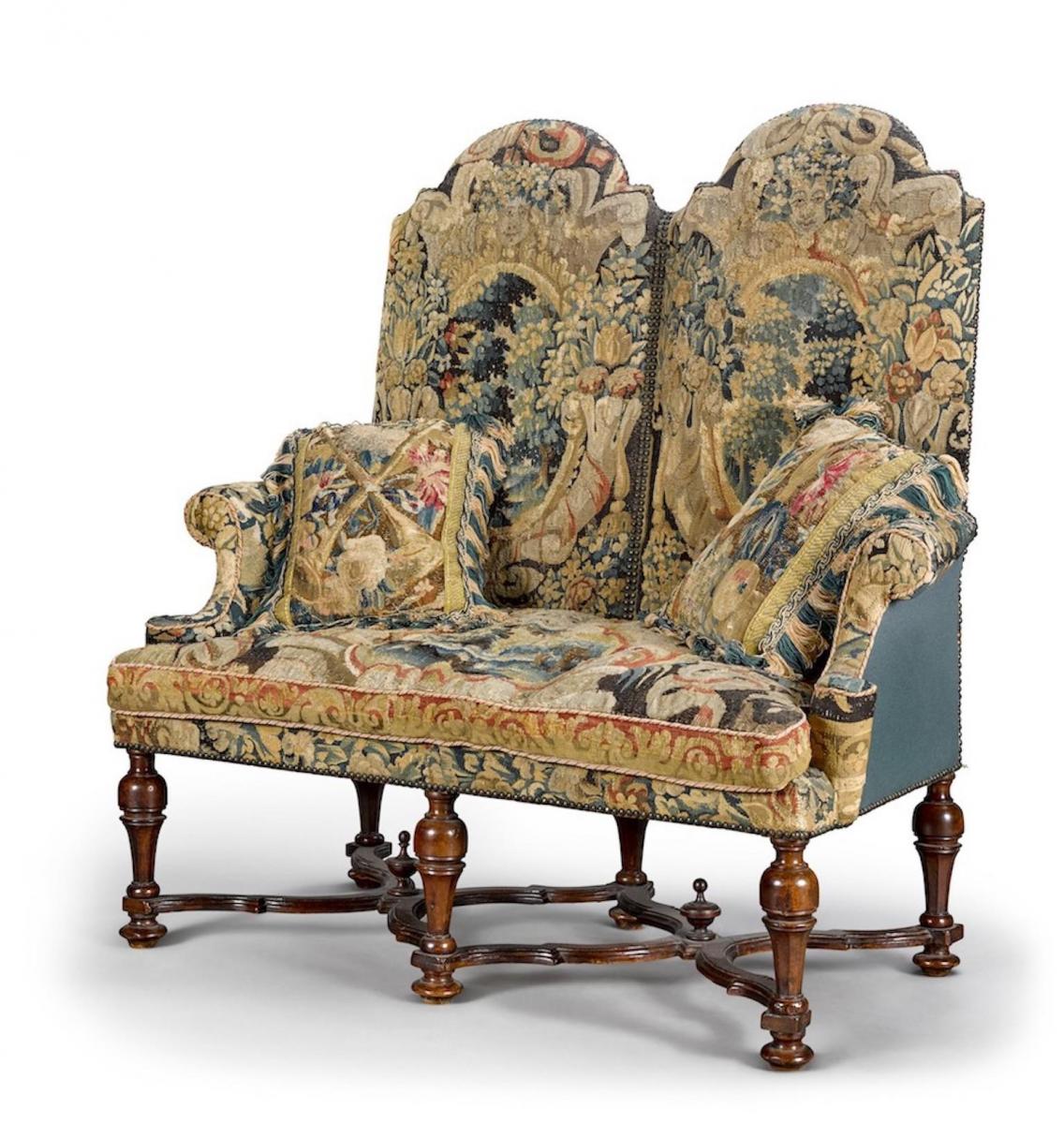
This object is eligible for a Certificate of BADA Provenance
The BADA Standard
- Since 1918, BADA has been the leading association for the antiques and fine art trade
- Members are elected for their knowledge, integrity and quality of stock
- Our clients are protected by BADA’s code of conduct
- Our dealers’ membership is reviewed and renewed annually
- Bada.org is a non-profit site: clients deal directly with members and they pay no hidden fees
An exceptionally, rare, transitional, double-chair, settee, circa 1700, upholstered in fine, 17th century century Brussels tapestry
Just purchased, more information and images available soon.
From the 1690s upholstered settees formed part of the lavish furnishings of the state rooms of a great house which were created as a showcase demonstrating the wealth and status of the owner.
They were supplied with sets of chairs ensuite, and usually upholstered in silk or velvet to match a state bed.
These high-backed settees were made for the elite market and the few that survive are mainly found in Historic House or Museum Collections. This model where the wings have been removed from the back to show the tapestry to full advantage transitional dating from circa 1700 and very rare.
Most of these late 17th century settees were upholstered in velvet or silk. Very few survive with either tapestry, needlework or embroidered upholstery, most dating from the early 18th century.
The framework of the settee is stable and suitable for occasional use as the tapestry is hardwearing.
This settee exudes the charm and character of the earliest model of formal settees injecting period atmosphere and grandeur into any interior.
The design of this tapestry has stylised masks above oval vignettes with verdure landscape scenes within each section of the back and a central section in the seat all sized to fit within the frame and of a fine quality that reflects the high status of this piece.
The high back settee is a two seat, design with scroll arms and a single, loose seat cushion all upholstered in fine 17th century Brussels tapestry. This was evidently made for a piece of furniture of this type as the design marries up convincingly with the frame of the settee.
Standing on six, turned and faceted legs, joined by 'X' stretchers surmounted with finials, on bun feet. The base has been gessoed and gilded, probably when the settee was originally made, and traces of this remain on the legs and stretchers. This has resulted in a slightly less deep patina than might otherwise have been the case, but it does indicate that the piece would have been highly regarded as gilded furniture of this period was generally confined to the great collections such as Knole Park in Kent. The back seat rail and one finial are replacements. There are some small repairs to the stretcher. English, circa 1700
The outside back and sides of the settee are covered in plain blue woven wool, called harrateen.
Two loose scatter cushions are made from unrelated, fine, 17th century, tapestry and available for purchase separately.
In the 1690s upholstered settees formed part of the lavish furnishings of state rooms in great houses, which were created to display the wealth and status of the owner to visitors. They were not for day-to-day use. Often settees were supplied for the state bedrooms, along with sets of chairs to match. They were arranged around the walls of the room. The upholstery would match the hangings on the bed.
High-backed furniture was ideal for showing off expensive, brightly coloured fabrics and passmenterie. The settee is characteristic of the 1690s form also seen in chairs of the period, with a shaped top rail, outward-curving wings and scrolled arms.
Provenance : I purchased this settee from Victoria Press twenty years ago and sold it to a collector twenty years ago and have not seen a comparable example since then. It has just come back into my hands from her Estate.
“If you learn to listen, the house will give you cues to what needs to be done,” this was former fashion designer Victoria Press's approach to interior decoration. She moved into No 4 Cheyne Walk in 1970, a house that George Eliot briefly lived and died in. The house was sold after she deceased and is now owned by Michael Bloomberg. She educated herself in the decorative arts by “going to museums, reading design books, talking to antiques dealers and enrolling in art history classes” which when combined with her formidable eye resulted in an exquisite collection.
Press acquired from Ronald Lee in the late 1970s. She often sold pieces and I bought this settee from her twenty years ago. It was immediately purchased by a collector and has just come back into my hands on the instructions of the Trustees handling her Estate. Press, who passed away in 2015 aged 88, began her career in the Forties working for the American designer Claire McCardell. As a designer she developed an eye for elegant, sumptuous style but with a practical approach: "The most useful thing I learned from McCardell was never make a dress without good pockets," which she in turn applied to interior decoration.
Dimensions
125.00cm high (49.21 inches high), 125.00cm wide (49.21 inches wide), 61.00cm deep (24.02 inches deep)The BADA Standard
- Since 1918, BADA has been the leading association for the antiques and fine art trade
- Members are elected for their knowledge, integrity and quality of stock
- Our clients are protected by BADA’s code of conduct
- Our dealers’ membership is reviewed and renewed annually
- Bada.org is a non-profit site: clients deal directly with members and they pay no hidden fees


